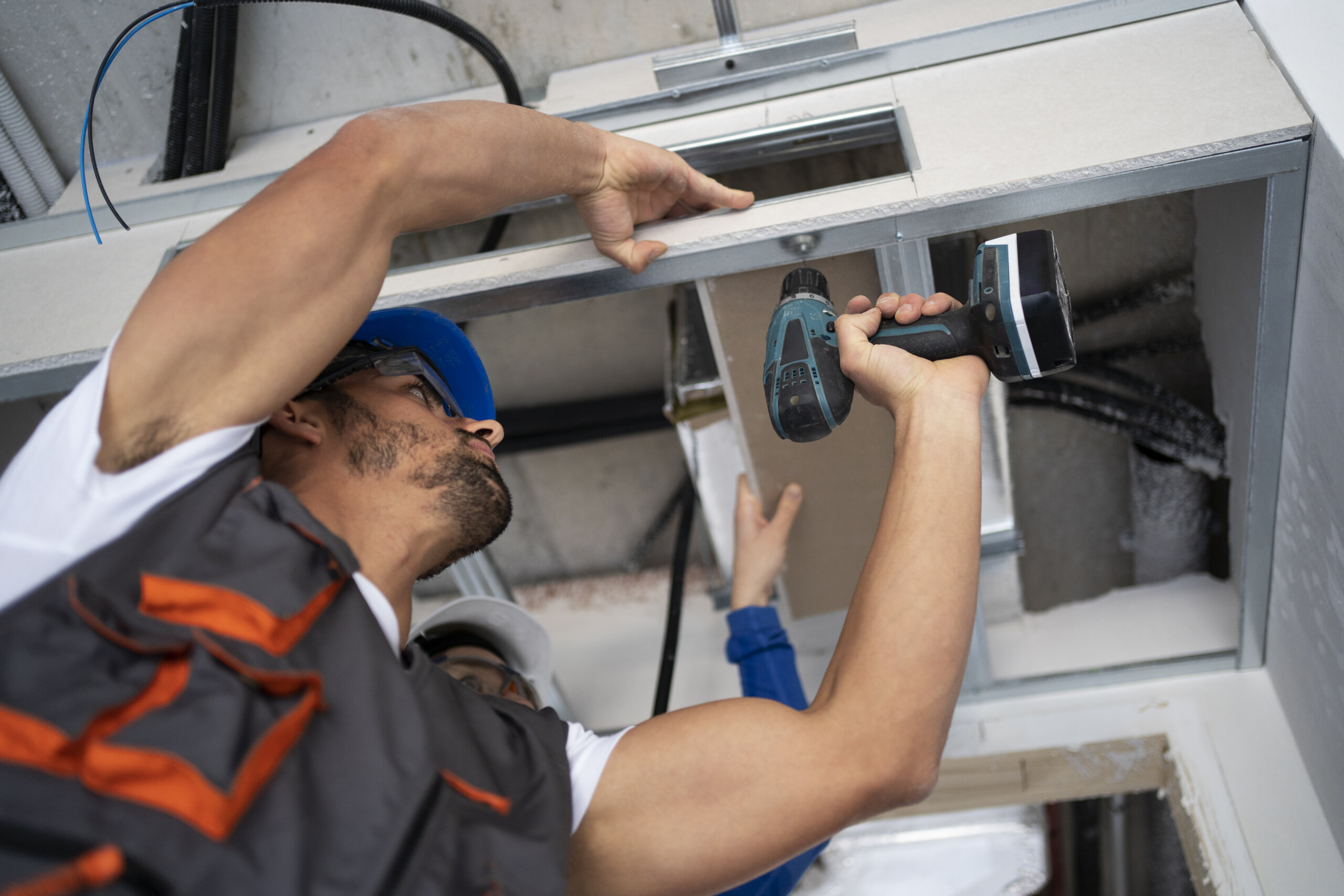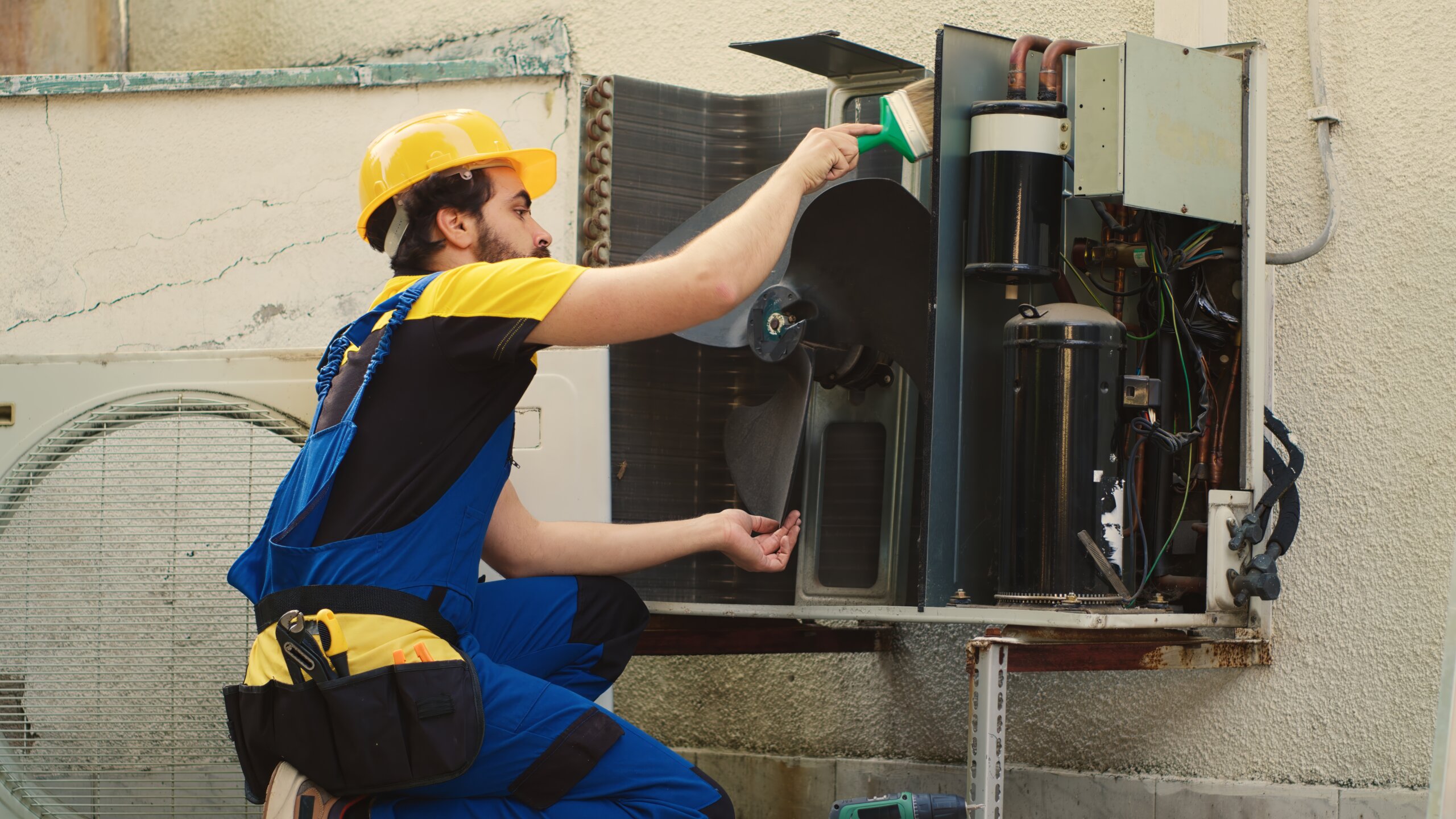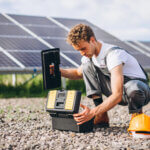Buildings—especially in the commercial and industrial sectors—are among the largest consumers of global energy. A significant portion of this demand stems from heating and cooling needs, with HVAC systems playing a central role in ensuring comfortable and safe environments year-round. However, as global attention shifts toward decarbonization and net-zero goals, the traditional energy-hungry HVAC model is undergoing a major transformation.
Recent environmental regulations and sustainability benchmarks—as explored in our core article on environmental compliance—are urging companies to rethink how they approach HVAC infrastructure. No longer is it sufficient to focus solely on operational efficiency; now, leaders must also address the long-term environmental impact of their systems.
In this evolving context, the adoption of energy-efficient HVAC technologies has become both a strategic and regulatory necessity. From renewable energy technologies to next-gen heat pumps and smart energy management, HVAC innovation is becoming a key driver of sustainability in the built environment.
This blog traces that transformation—highlighting how the integration of renewable energy into HVAC systems is reshaping not only the way buildings consume energy but also how field operations teams plan for the future. Through real-world examples and emerging trends, we explore where the industry is headed next.

The HVAC Energy Dilemma
For decades, buildings have relied on conventional HVAC units—furnaces, boilers, and basic central air conditioning systems—to manage indoor climates. While these systems served their purpose, they often operated on fossil fuels, lacked proper zoning, and ran on static schedules that ignored real-time occupancy or environmental conditions. The result? High energy consumption with limited efficiency.
One of the biggest contributors to this inefficiency is aging infrastructure. Many facilities, especially in older commercial and industrial buildings, still depend on outdated HVAC systems that were never designed with modern energy goals in mind. These older indoor air conditioning setups often run continuously or cycle inefficiently, leading to massive energy waste, increased maintenance demands, and unnecessary greenhouse gas emissions.
Poor building insulation and outdated thermostats further compound the problem, forcing HVAC systems to work harder than necessary. To compensate, building managers often resort to repeated air conditioning service calls or costly temporary fixes instead of systemic upgrades. This cycle results in higher operational costs and inconsistent climate control—impacting both performance and sustainability metrics.
The growing demand for energy heating and cooling reform isn’t just about saving money—it’s about aligning with national energy policies, industry expectations, and environmental responsibility. Today, making HVAC systems smarter, cleaner, and more sustainable is no longer optional; it’s a necessity driven by evolving regulations, rising utility prices, and public demand for greener operations.
As we move forward, the integration of energy-efficient strategies and renewable technologies is becoming the foundation of modern HVAC design.
The Rise of Energy-Efficient HVAC Solutions
The evolution of HVAC systems reflects a broader shift from energy-intensive, high-emission heating and cooling units toward energy-efficient HVAC solutions designed to minimize environmental impact while optimizing performance. Over the past few decades, the industry has witnessed a clear timeline of progress.
In the early 2000s, most heating air conditioning systems prioritized basic comfort and reliability but offered limited energy savings. As awareness about climate change and energy costs grew, manufacturers and HVAC companies began investing in innovations that dramatically improved system efficiency. This gave rise to technologies like variable-speed compressors, advanced thermostats, and improved ductwork designs.
Today, energy-efficient HVAC means much more than just low electricity use. It incorporates comprehensive metrics such as Seasonal Energy Efficiency Ratio (SEER), Heating Seasonal Performance Factor (HSPF), and certifications like Energy Star, which provide standardized benchmarks for performance. These measures help consumers and businesses evaluate and select systems that deliver significant energy savings without sacrificing comfort.
Alongside technological improvements, industry standards and government regulations have become stricter. Initiatives such as the U.S. Department of Energy’s minimum efficiency requirements push manufacturers to innovate further. This regulatory landscape encourages the integration of renewable energy technologies such as solar-assisted HVAC and geothermal heating systems.
The latest energy solutions are not only about reducing consumption but also about blending traditional HVAC with renewable sources to create hybrid systems. For example, pairing heat pumps with solar panels can cut carbon emissions while lowering operational costs. Forward-thinking HVAC companies are now focusing on smart, connected systems that optimize energy use in real-time, responding dynamically to changing weather, occupancy, and demand patterns.

This transformation is reshaping the HVAC landscape—making systems smarter, greener, and more sustainable while meeting the growing expectations of businesses and regulators alike.
Solar Heating and HVAC Integration
As the push for sustainable energy grows, solar heating has emerged as a key player in modern heating and cooling services, especially in commercial and industrial buildings across the U.S. By harnessing the sun’s energy, solar heating systems reduce reliance on fossil fuels while enhancing the efficiency of traditional HVAC operations.
In practical terms, solar thermal panels capture heat solar energy to warm water or air, which can then be used directly for space heating or integrated into existing HVAC infrastructure. This integration significantly lowers energy consumption and utility costs, offering a compelling solution for building owners focused on sustainability and savings.
A growing number of U.S. commercial buildings have successfully adopted solar heating to complement air conditioning installation and furnace installation projects. For instance, corporate office parks in California and Texas are increasingly outfitting their HVAC systems with solar thermal collectors, reducing their carbon footprint while maintaining effective climate control. These installations often tie into central heating systems or support radiant floor heating, optimizing energy use year-round.
Moreover, solar heating can reduce the workload on conventional heating components, extending the lifespan of furnaces and reducing the frequency of costly repairs or replacements. By pre-heating air or water before it enters the HVAC system, buildings experience less strain during peak cold months, leading to smoother operation and lower emissions.
The synergy of energy and renewable energy integration in HVAC design highlights a future where solar technologies don’t just supplement but actively enhance heating and cooling services. This growing trend reflects a broader commitment across industries to deploy cleaner, smarter energy solutions while meeting regulatory demands and reducing operational expenses.
Geothermal HVAC and Heat Pump Systems
Among the most promising advances in sustainable HVAC technology is geothermal HVAC, which leverages the stable temperatures beneath the earth’s surface to provide efficient geothermal heating and cooling. Unlike traditional systems that rely heavily on outside air temperatures, geothermal units use the ground as a heat source in winter and a heat sink in summer, offering a reliable, energy-saving alternative.
At the core of many geothermal systems are heat pump air conditioning units, which transfer heat between the building and the ground through a series of underground pipes filled with a refrigerant or water. These ground-source heat pumps operate at much higher efficiency levels than their air-source counterparts, which extract heat from the outside air. Air-source heat pumps perform well in moderate climates but can lose efficiency during extreme temperatures, whereas geothermal heat pumps maintain consistent performance year-round.
This distinction is critical for businesses aiming to reduce HVAC energy consumption and carbon footprints. By investing in geothermal heating and cooling, facilities can achieve significant reductions in energy use—often cutting heating and cooling costs by 30% to 60%. Additionally, geothermal systems have fewer moving parts exposed to harsh outdoor conditions, translating into lower maintenance demands and reduced calls for furnace repair services and other costly repairs.
With their high efficiency and reliability, geothermal HVAC systems are rapidly gaining traction among forward-thinking HVAC companies and building operators. They represent a strategic solution that balances upfront installation costs with long-term operational savings and environmental benefits.
Incorporating geothermal technology into modern HVAC design is not just about embracing the latest energy trends—it’s about creating resilient, sustainable systems capable of meeting the growing demand for clean energy solutions in commercial and industrial sectors.
Renewable Energy Adoption in Commercial HVAC Units
Industries and commercial buildings are increasingly upgrading their existing HVAC units by integrating renewable energy heating solutions. Instead of replacing entire systems, many facility managers choose to retrofit their current equipment with solar thermal panels, geothermal loops, or hybrid heat pump technologies. This approach enhances energy efficiency while reducing environmental impact.
One of the key drivers behind this shift is the strong return on investment (ROI) that these upgrades offer. Tax incentives and rebates from federal and state programs make adopting renewable energy technologies more affordable. These financial benefits, combined with evolving regulatory requirements around energy use and emissions, encourage businesses to modernize their heating and cooling services without compromising budgets.
In practice, facilities implement energy-efficient strategies by combining traditional hvac heating and air systems with renewable components. For example, solar thermal systems can preheat water used in HVAC processes, while geothermal heating reduces the demand on furnaces during colder months. This reduces electricity consumption and helps lower greenhouse gas emissions.

Additionally, retrofitting with renewable energy solutions often decreases the need for frequent air conditioning repair service calls and other maintenance, as the existing HVAC equipment faces less strain. This results in improved reliability and longer equipment lifespans.
By adopting renewable energy in their HVAC systems, commercial buildings not only improve operational efficiency but also stay ahead of compliance requirements. This proactive approach supports sustainability goals while boosting long-term cost savings and business resilience.
Future Trends and Smart Energy Innovations
Looking ahead, the HVAC industry is rapidly evolving with the rise of smart HVAC systems that leverage artificial intelligence (AI) to optimize energy load and improve overall efficiency. These intelligent systems analyze real-time data from sensors and weather forecasts to adjust heating and cooling automatically, reducing waste and enhancing comfort in commercial buildings.
In addition to AI-driven controls, innovative cooling building designs are being developed to minimize energy consumption. These include advanced insulation materials, passive cooling strategies, and dynamic ventilation systems that work in tandem with HVAC units to create more sustainable environments.
Hybrid systems that combine energy-efficient HVAC technology with renewable energy sources like solar and geothermal are becoming increasingly popular. These integrated solutions provide a balance of reliability, cost savings, and reduced carbon emissions—addressing both immediate energy needs and long-term sustainability goals.
As industries continue to adopt these smart and renewable technologies, the future of HVAC promises not only improved energy performance but also enhanced adaptability to changing environmental regulations and operational demands.
What This Means for Field Ops and Leadership
The shift toward energy-efficient HVAC and renewable energy technologies is reshaping how industries manage their HVAC systems. For field service managers, CEOs, and decision-makers, this evolution goes beyond just reducing costs—it’s about meeting stricter compliance standards, enhancing corporate reputation, and achieving long-term carbon reduction goals.
Adopting sustainable HVAC solutions means investing in systems that are more reliable, easier to maintain, and aligned with the growing demand for environmental responsibility. Leadership plays a crucial role in driving this change by prioritizing renewable integration and encouraging proactive audits of existing equipment.
If your organization hasn’t yet evaluated its HVAC systems for energy efficiency and renewable upgrades, now is the time to start. Taking these steps not only future-proofs operations but also positions your business as a leader in sustainability and operational excellence.
Author Bio

Palani Kumar
Palani Kumar is a seasoned digital marketing professional with over 13 years of experience in crafting impactful strategies for B2B brands.
As the marketing lead at FieldAx, he focuses on bridging the gap between technology and business growth, simplifying complex field service management concepts into valuable insights.
Passionate about delivering informative and practical content, Palani writes about industry trends, best practices, and innovations that help businesses optimize their field operations.
When not working on marketing strategies, he enjoys exploring history, engaging in thought-provoking discussions, and appreciating the balance between technology and tradition.





